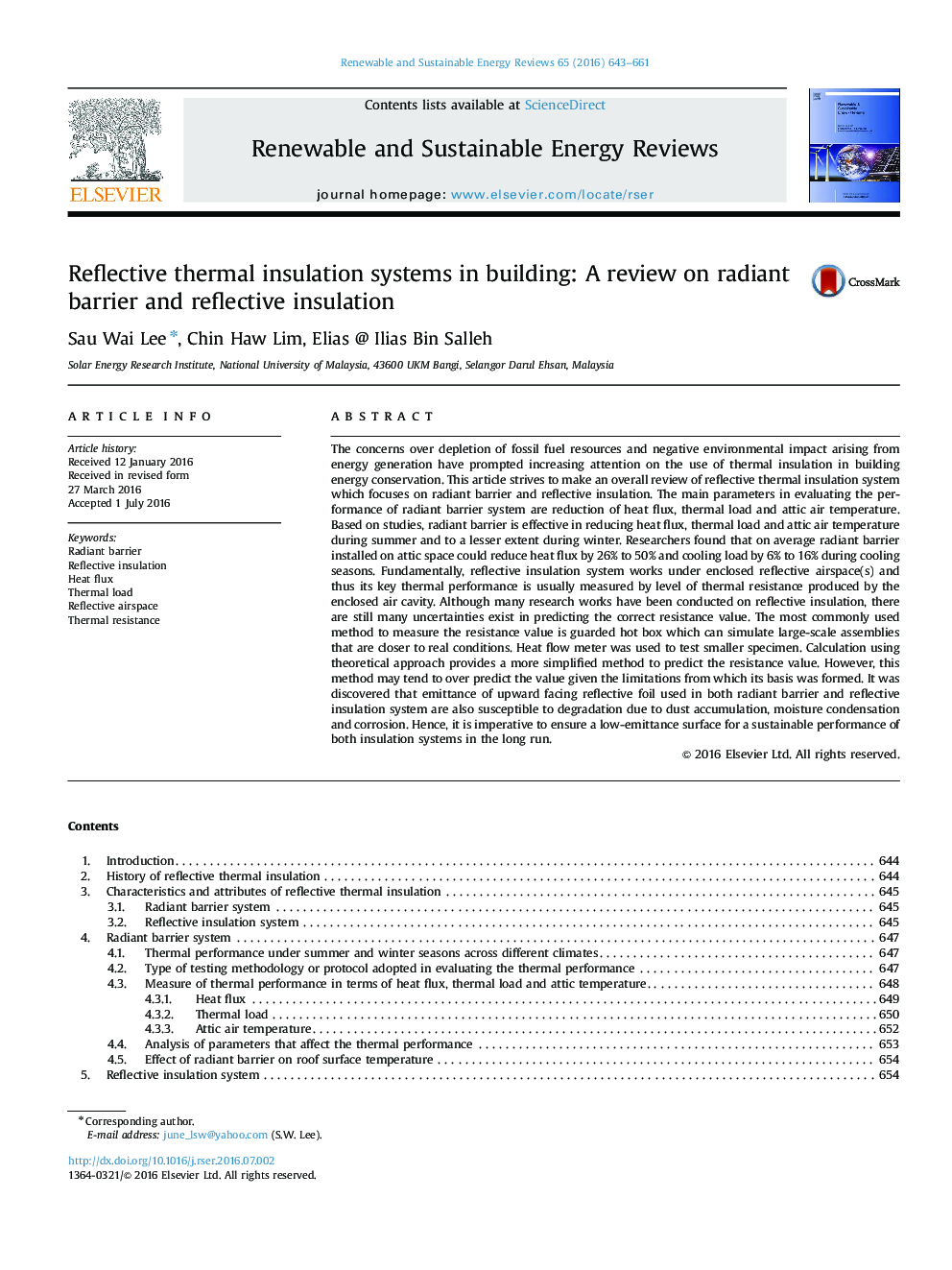| Article ID | Journal | Published Year | Pages | File Type |
|---|---|---|---|---|
| 8112956 | Renewable and Sustainable Energy Reviews | 2016 | 19 Pages |
Abstract
The concerns over depletion of fossil fuel resources and negative environmental impact arising from energy generation have prompted increasing attention on the use of thermal insulation in building energy conservation. This article strives to make an overall review of reflective thermal insulation system which focuses on radiant barrier and reflective insulation. The main parameters in evaluating the performance of radiant barrier system are reduction of heat flux, thermal load and attic air temperature. Based on studies, radiant barrier is effective in reducing heat flux, thermal load and attic air temperature during summer and to a lesser extent during winter. Researchers found that on average radiant barrier installed on attic space could reduce heat flux by 26% to 50% and cooling load by 6% to 16% during cooling seasons. Fundamentally, reflective insulation system works under enclosed reflective airspace(s) and thus its key thermal performance is usually measured by level of thermal resistance produced by the enclosed air cavity. Although many research works have been conducted on reflective insulation, there are still many uncertainties exist in predicting the correct resistance value. The most commonly used method to measure the resistance value is guarded hot box which can simulate large-scale assemblies that are closer to real conditions. Heat flow meter was used to test smaller specimen. Calculation using theoretical approach provides a more simplified method to predict the resistance value. However, this method may tend to over predict the value given the limitations from which its basis was formed. It was discovered that emittance of upward facing reflective foil used in both radiant barrier and reflective insulation system are also susceptible to degradation due to dust accumulation, moisture condensation and corrosion. Hence, it is imperative to ensure a low-emittance surface for a sustainable performance of both insulation systems in the long run.
Related Topics
Physical Sciences and Engineering
Energy
Renewable Energy, Sustainability and the Environment
Authors
Sau Wai Lee, Chin Haw Lim, Elias @ Ilias Bin Salleh,
